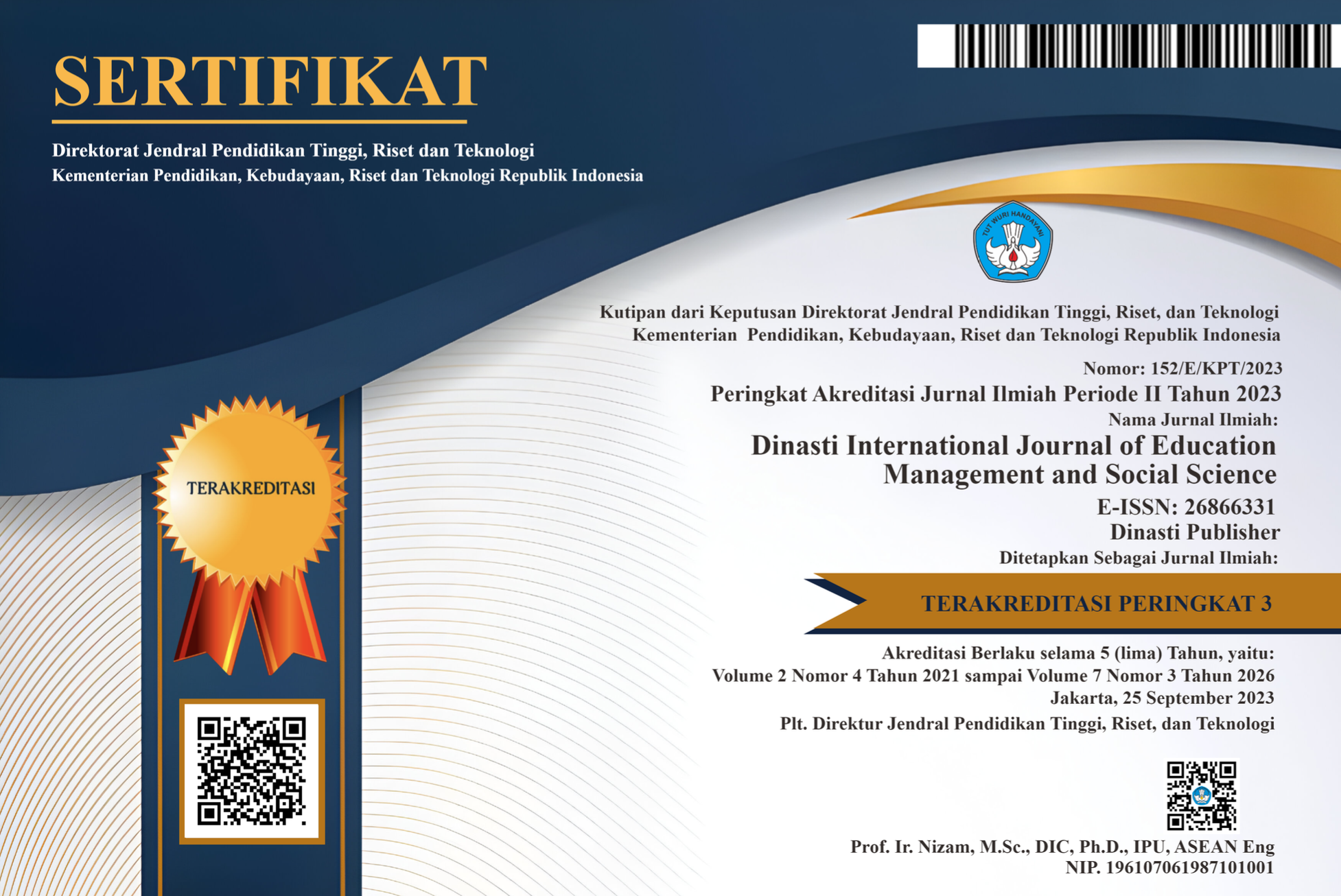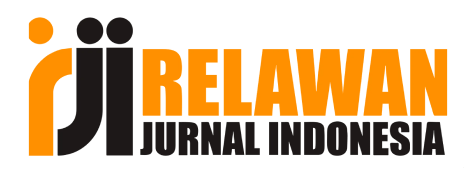The Influence of Workload, Work Environment on Turnover Intention through Motivation in PT. Jambi Planning Commerce
DOI:
https://doi.org/10.38035/dijemss.v6i1.3255Keywords:
Workload, Work Environment, Turnover Intention, Motivation, & Employee RetentionAbstract
The purpose of this study is to examine the impact of workload and work environment on turnover intention in employees at PT. Jambi Planning Commerce, with motivation acting as a mediating variable. This study uses descriptive and verification methodology, using a quantitative approach. Questionnaires were used to collect data from 52 permanent employees of PT. Jambi Planning Commerce. SPSS version 29.0 was used to conduct statistical analysis, which includes multiple regression and path analysis. The objective was to investigate the direct and indirect impacts of workload and work environment on turnover intention, mediated by motivation. The results show that the number of workers and working conditions have a large and favourable impact on motivation and the likelihood of leaving the job. More precisely, the direct impact of workload on motivation accounts for 17.9% of the overall effect, while the indirect impact accounts for 18.1%. The work environment has a direct impact of 26.1% and an indirect impact of 18.1% on motivation. Collectively, these characteristics explained 80.2% of the variability in motivation. In addition, the level of work assigned and the conditions under which work is performed have a significant impact on the desire to leave the job, accounting for 25.8% and 18.8% of the effect, respectively. In addition, there is an indirect effect of 18.4% each, which results in a cumulative effect of 81.4%. Motivation plays an important role in turnover intention, accounting for 75.9% of the variation.
References
Aisyah, S., Deswindi, L., & Indrajaya, D. (2020). Are Physical and Non-Physical Working Environment Effect Employees Productivity with Motivation as an Intervening Factor? Proceedings of the 3rd Asia Pacific Management Research Conference, 149(Apmrc 2019), 242–247. https://doi.org/10.2991/aebmr.k.200812.042
Chafi, M. B., Hultberg, A., & Yams, N. B. (2022). Post-pandemic office work: Perceived challenges and opportunities for a sustainable work environment. Sustainability (Switzerland), 14(1), 1–20. https://doi.org/10.3390/su14010294
Choy, M. W. C., & Kamoche, K. (2020). Identifying stabilizing and destabilizing factors of job change: a qualitative study of employee retention in the Hong Kong travel agency industry. Current Issues in Tourism, 1–14. https://doi.org/10.1080/13683500.2020.1792853
Creswell, J. W., & Creswell, J. D. (2018). Mixed Methods Procedures. In Research Defign: Qualitative, Quantitative, and Mixed M ethods Approaches.
de Jonge, J., & Huter, F. F. (2021). Does Match Really Matter? The Moderating Role of Resources in the Relation between Demands, Vigor and Fatigue in Academic Life. Journal of Psychology: Interdisciplinary and Applied, 155(6), 548–570. https://doi.org/10.1080/00223980.2021.1924603
Guzeller, C. O., & Celiker, N. (2020). Examining the relationship between organizational commitment and turnover intention via a meta-analysis. International Journal of Culture, Tourism, and Hospitality Research, 14(1), 102–120. https://doi.org/10.1108/IJCTHR-05-2019-0094
Haeruddin, M. I. M., Natsir, U. D., Aslam, A. P., Aswar, N. F., & Mustafa, M. Y. (2023). When Love and Hate Collide: The Influence of Conflict on Employees’ Turnover Intention. Asian Journal of Economics, Business and Accounting, 23(7), 16–27. https://doi.org/10.9734/ajeba/2023/v23i7942
Huang, I. C., Du, P. L., Wu, L. F., Achyldurdyyeva, J., Wu, L. C., & Lin, C. S. (2021). Leader–member exchange, employee turnover intention and presenteeism: the mediating role of perceived organizational support. Leadership and Organization Development Journal, 42(2), 249–264. https://doi.org/10.1108/LODJ-03-2020-0094
Hussain, K., Abbas, Z., Gulzar, S., Jibril, A. B., & Hussain, A. (2020). Examining the impact of abusive supervision on employees’ psychological wellbeing and turnover intention: The mediating role of intrinsic motivation. Cogent Business and Management, 7(1). https://doi.org/10.1080/23311975.2020.1818998
Islam, M. A., Jantan, A. H., Yusoff, Y. M., Chong, C. W., & Hossain, M. S. (2023). Green Human Resource Management (GHRM) Practices and Millennial Employees’ Turnover Intentions in Tourism Industry in Malaysia: Moderating Role of Work Environment. Global Business Review, 24(4), 642–662. https://doi.org/10.1177/0972150920907000
Jeffries, A. C., Marcora, S. M., Coutts, A. J., Wallace, L., McCall, A., & Impellizzeri, F. M. (2022). Development of a Revised Conceptual Framework of Physical Training for Use in Research and Practice. Sports Medicine, 52(4), 709–724. https://doi.org/10.1007/s40279-021-01551-5
Juana, S., Ali, H., & Imron Rosadi, K. (2023). Effect of Workload, Work Discipline and Work Motivation on Employee Performance. International Journal of Advanced Multidisciplinary, 2(2), 535–541. https://doi.org/10.38035/ijam.v2i2.333
Junaidi, A., Sasono, E., Wanuri, W., & Emiyati, D. W. (2020). The effect of overtime, job stress, and workload on turnover intention. Management Science Letters, 10(16), 3873–3878. https://doi.org/10.5267/j.msl.2020.7.024
Kodarlikar, M., & Umale, V. (2020). A Healthy Workplace Environment: Impact on Employee and Organizational Performance. Iconic Research and Engineering Journals, 4(2), 116–122.
Miao, S., Rhee, J., & Jun, I. (2020). How much does extrinsic motivation or intrinsic motivation affect job engagement or turnover intention? A comparison study in China. Sustainability (Switzerland), 12(9). https://doi.org/10.3390/su12093630
Novitasari, D. (2020). Job Stress and Turnover Intention: Understanding the Role of Leadership and Organizational Commitment. International Journal of Science and Management Studies (IJSMS), October, 1–14. https://doi.org/10.51386/25815946/ijsms-v3i5p101
Pahlawan, A. F. S., & Wahyuni, P. (2022). The effect of workload and work environment on employee turnover intention mediated by job satisfaction. Sebelas Maret Business Review, 7(2), 93. https://doi.org/10.20961/smbr.v7i2.73415
Pratama, P. Y. A. (2022). The Influence of Service Quality, Servicescape, and Relationship Marketing on Student Loyalty with Student Satisfaction as Mediation on Mediterranean Bali Campus. International Journal of Multidisciplinary Research and Analysis, 5(9), 2496–2508. https://doi.org/10.47191/ijmra/v5-i9-25
Puhakka, I. J. A., Nokelainen, P., & Pylväs, L. (2021). Learning or Leaving? Individual and Environmental Factors Related to Job Satisfaction and Turnover Intention. Vocations and Learning, 14(3), 481–510. https://doi.org/10.1007/s12186-021-09275-3
Rusmiati, E., Harjadi, D., & Karmela, F. L. (2021). Analysis Of The Impact Of Risk And Workload On Motivation And Impact On Employee Performance. International Journal of Economics, Business and Accounting Research, 5(2), 386–398. https://jurnal.stie-aas.ac.id/index.php/IJEBAR
Smokrovi?, E., Kizivat, T., Bajan, A., Šoli?, K., Gvozdanovi?, Z., Far?i?, N., & Žvanut, B. (2022). A Conceptual Model of Nurses’ Turnover Intention. International Journal of Environmental Research and Public Health, 19(13). https://doi.org/10.3390/ijerph19138205
Sugiyono. (2017). Metode Penelitian Kuantitatif, Kualitatif, dan R&D. Alfabeta.
Sugiyono. (2018). Metode Penelitian Kuantitatif. Alfabeta.
Sugiyono. (2019). Metode Penelitian Kuantitatif, Kualitatif, dan R&D. Bandung: Alfabeta. Badan.
Sugiyono. (2021). Metode Penelitian Kuantitaif, Kualitatif, R&D. Alfabeta
Downloads
Published
How to Cite
Issue
Section
License
Copyright (c) 2024 Citra Andawari, M. Zahari, Osrita Hapsara

This work is licensed under a Creative Commons Attribution 4.0 International License.
Authors who publish their manuscripts in this journal agree to the following conditions:
- The copyright on each article belongs to the author(s).
- The author acknowledges that the Dinasti International Journal of Education Management and Social Science (DIJEMSS) has the right to be the first to publish with a Creative Commons Attribution 4.0 International license (Attribution 4.0 International (CC BY 4.0).
- Authors can submit articles separately, arrange for the non-exclusive distribution of manuscripts that have been published in this journal into other versions (e.g., sent to the author's institutional repository, publication into books, etc.), by acknowledging that the manuscript has been published for the first time in the Dinasti International Journal of Education Management and Social Science (DIJEMSS).















































